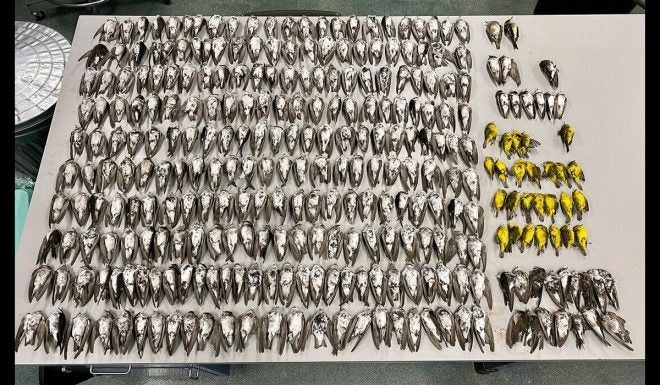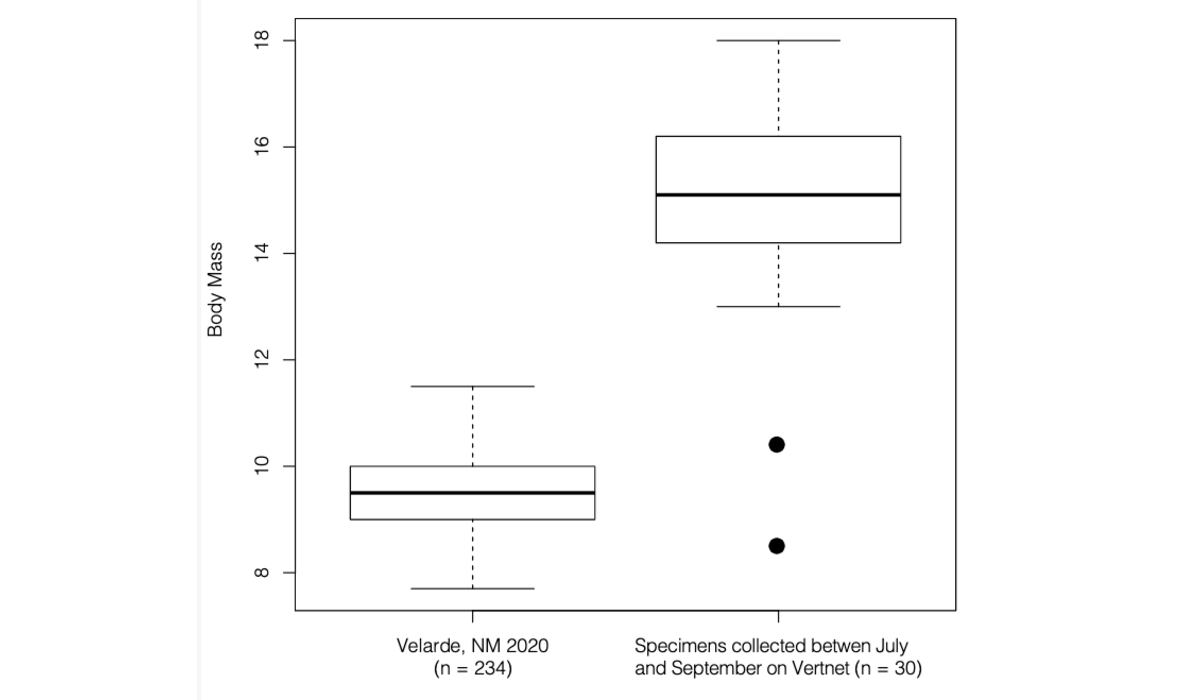Southwestern Bird Die-Off: An Unsolved Mystery
Eve Flanigan 09.24.20

Birds collected by New Mexico ornithologists on September 14, 2020. Image courtesy of Jenna McCullough.
Reports began to pour in on September 9, 2020, and continued for more than a week. Scores of small dead birds, mostly songbirds and swallows, were being found across New Mexico, Arizona, west Texas, and southern Colorado. On social media, the topic became a hot one. Virtually every post posed the same question: Why?
Many of the deceased birds were judged by experienced birders as being emaciated. There had also been environmental stress due to a rapid temperature drop of up to 60 degrees Fahrenheit across the region. Record cold temps were accompanied by gale-force winds, snow, and rain.
Wildfires rage up and down the west coast, fueling speculation that the birds were exhausted from avoiding smoke on their migration south. The timing and combination of events presented what appears to be a non-survivable migration for tiny fowl.
In the midst of exploring the problem, I happened upon an article presented from a scholarly perspective by ornithologist Jenna McCullough of the University of New Mexico. She and some colleagues hand-collected the corpses of more than 300 small migratory birds, mostly swallows, near Velarde in northern New Mexico. Her assessment? Lack of food.
The birds she and her colleague Nick Vinciguerra inspected carried no body fat, making them vulnerable to hypothermia. McCullough speculates the sudden change in weather killed or immobilized the flying insects most of these species eat, causing starvation during a time when migration and weather conditions were burning off calories.
Comparison of body mass of Violet-Green Swallows salvaged Sept 14, 2020 (left) with that of others of the same species collected across N. America during fall migration. Illustration by Jenna McCullough.
But there are more than just tiny insectivores and swallows dying. Small owls and wood ducks have also been found mysteriously dead across the region. Another ornithologist associated with the US Fish & Wildlife Service, Allison Salas, used Twitter to announce a reporting tool called the Southwest Avian Mortality Project. There, anyone can register a photo and the species of bird found. The site is getting inputs from across the western third of North America. Its map offers insight into hotspots. While the Rio Grande flyway in central New Mexico appears to be one such spot, it should be noted that urban areas will naturally have more people to find and report birds.
Salas draws a broader conclusion than McCullough, noting not only lack of fat but also inferior muscle in bird carcasses. She leans toward smoke avoidance — birds being driven into the Chihuahuan desert where food is scarce — and the very broad assumption of climate crisis as drivers of bird deaths. So while these conclusions might initially seem to be at odds, starvation does seem to be the common thread.
Many respondents on social media birding pages ask, “What can I do to help?” The most useful responses seem to be to provide water where there is none and to plant native plants, the latter being a long-term solution that doesn’t do much for birds migrating now. No one seems to be addressing shelter, which plants can provide to some extent. Manmade and natural sheltering spots are named by McCullough as something birds learn over time and adopt in groups to share body heat when temperatures drop dramatically.
I’ll keep an eye on this and report again on any practical resources to protect western bird habitat. Having been saddened to find three tiny Wilson’s Warblers that met their demise too soon, it’s the least I can do.
